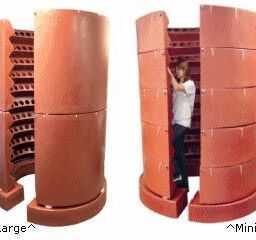Chiaroscuro – The Concept
Chiaroscuro is a unique art form in which the use of light symbolizes various objects and gives them a three-dimensional feel. Chiaroscuro, an Italian term for light & dark, gives an edge to drawing, painting, and printmaking, done on a two-dimensional canvas.
The History
To trace the history, in 5th century BC, ‘Shadow-Painting’ was evidenced in Greece. The art form managed to survive through the Byzantine Empire (4th century-1453). Finally, Chiaroscuro emerged during the Renaissance Era (14th-16th centuries) in Italy and Flanders. Here, the artists used colored paper and pastel colors. The concept of Illuminated Manuscripts of the Late Roman Imperial Era (3rd century AD) was the key inspiration. In 1508, Chiaroscuro woodcuts evolved in Germany. First art works of the style were made in Italy. By the sixteenth century, Compositional Chiaroscuro gained momentum. It was heavily used in Mannerist and Baroque art works. Dramatic Chiaroscuro or Tenebrism was witnessed in 17th & 18th centuries, mainly in Spain and Italy. The art style touched Romanticism as well in the 19th century.
The Details
Typical Chiaroscuro works involve the use of bold strokes in striking contrasts. The movement usually is from light to dark. This way, the image looks deep and meaningful. The transition, though not strong, is enough to capture the imagination of the human mind. It is generally used to depict the human body where this light dark effect is found very useful. The exquisite use of shades to depict the various parts of the human body is the most renowned aspect of Chiaroscuro.
The Types:
o Pencil Shading – A simple form of Chiaroscuro, which most people have used in their lives at some moment, is ‘shading.’ Here, the same contrast effect is wonderfully captured with the help of pencil strokes.
o Chiaroscuro Woodcut – These are woodcut blocks, used with different colored inks.
o Chiaroscuro Drawing – Here, dark mediums are used to draw on colored papers. The highlights are done in white.
o Printmaking Techniques – Washes, Stippling or Dotting, and Surface Tone
o Other Fields – Apart from paintings, Chiaroscuro concepts are also used in cinema, photography, and prints, imparting a completely new dimension to the concept.
The Artists
The famous Greek painter and sculptor Apollodoros (430-400 BC) first used Chiaroscuro, as ‘Shadow-Painting,’ way back in the 5th century B.C. Other famous Chiaroscuro artists from Italy include Ugo da Carpi (1455-1523), Giovanni Baglione (1566-1643), and Caravaggio (1573-1610). Undoubtedly, Caravaggio was the most famous of them all. His followers, who made their own mark in the field, included Peter Paul Rubens (Flemish, 1577-1640), Gerard van Honthorst (Italian, 1592-1656), Dirck van Baburen (Dutch, 1595-1624), and Jacob Jordaens (Flemish, 1593-1678). Even the famous painter Rembrandt was known to use the basic concepts of Chiaroscuro by painting images using candle light and its effects as a theme.
The Art Works
Among innumerable Chiaroscuro stunners, few of the most impressive and classical ones are ‘Annunciation’ (1545-46) by Domenico Beccafumi (1486-1551), ‘Crucifixion of St. Peter’ (1600) by Caravaggio, The Flight to Egypt’ (1609) by Adam Elsheimer (German, 1578-1610), ‘Nativity’ by Gerard van Honthorst, ‘Mary Magdalene’ by Georges de La Tour (French, 1593-1652), and ‘St. Peter in Prison’ (1631) by Rembrandt (Dutch 1606-69).
AUTOPOST by BEDEWY VISIT GAHZLY



